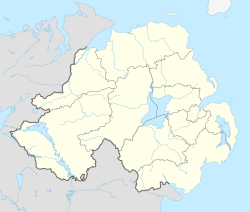Mountnorris
| |
|---|---|
 Main Street | |
Location within Northern Ireland | |
| Population | 155 (2011 Census) |
| Irish grid reference | H995348 |
| • Belfast | 40 mi (64 km) |
| District | |
| County | |
| Country | Northern Ireland |
| Sovereign state | United Kingdom |
| Post town | ARMAGH |
| Postcode district | BT60 |
| Dialling code | 028, +44 28 |
| Police | Northern Ireland |
| Fire | Northern Ireland |
| Ambulance | Northern Ireland |
| UK Parliament | |
Mountnorris is a small village and townland in County Armagh, Northern Ireland. The village also extends into the townland of Tullyherron. It lies about six miles south of Markethill. It is within the Armagh, Banbridge and Craigavon local government area. It had a population of 155 people (79 households) in the 2011 Census. Ulsterbus offers 1 stop in Mountnorris. [1] (2001 Census: 165 people

